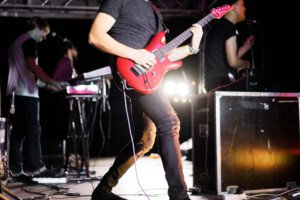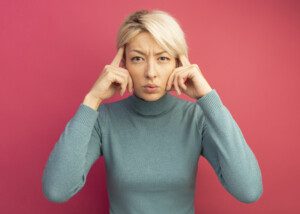
Don’t people realize that sitting on the deck of some bar & grill to listen to the live band music will damage their hearing?
The people who do this tend to do it on a regular basis, and it’s that cumulative exposure that puts them at high risk for permanently dulled hearing.
Whether you’re an accountant during the week and wear wire rim glasses and drive an economy car, or wear a bandana, leather jacket, have tattoos and ride a Harley, you’re at risk for non-retractable hearing loss if you make a habit of sitting before live bands.
Unless you wear really good ear plugs.
“Hearing loss is about volume and time,” says Dr. Stacey Silvers, MD, of Madison ENT & Facial Plastic Surgery in NYC, who is board certified in otolaryngology (ear, nose and throat specialist).
How loud and how long is the live band music?
“The more exposure you have, the more risk,” says Silvers. Some people are die-hard fans of live bands, attending their shows for several hours every week. Week after week.
If a band is hired by the bar & grill to play for four or five hours, and you sit on the deck where the band is playing, that’s a lot of assault on the nerve cells inside your ears—especially if you do this a few times a week.
“Live music always involves speakers,” says Silvers. “The closer you are to the speakers the more damage you can have.”

Just how loud is too loud for live band music?
You may not think a few hours is risky, but the National Institute for Occupational Safety and Health, and the Centers for Disease Control, aren’t too generous with their guidelines for permissible exposure time.
Permissible exposure time refers to the time limit, per decibel amount, before hearing damage can result. A decibel (dB) is a unit of sound volume.
If you enjoy regularly or EVEN OCCASIONALLY attending live band performances, check this out:
• 88 dB: four hours
• 91 dB: two hours
• 94 dB: one hour
• 97 dB: 30 minutes
• 100 dB: 15 minutes
Just how loud is that live band that you’re sitting only 30 feet from?
“The farther you are away from the noise, the less damage it will cause,” says Silvers. If a dB meter registers 105 dBs only five feet from the band, and you’re sitting 30 feet, you’re not getting 105 dBs.
However, you also don’t know if it’s no longer high enough to make more than two hours of sitting there potentially damaging, either.
You’d have to have a dB meter at your side to know where the permissible range is.
But if you must significantly raise your voice to be heard by your friends sitting with you, then assume that more than a few hours, possibly only one hour, can cause permanent damage to your hearing.
Does this mean that after the performance, you won’t be able to hear your baby crying in the next room? Of course not.
Hearing loss from prolonged exposure over time in the high 80 to low 100 dB range is very gradual—and painless.
Your only symptom is, “Honey, speak up, I can’t hear you,” or, “Why do children run their words together when they talk?”
Do you have a crystal ball?
“The same exposure for one person may affect another different,” says Silvers.
“The same applies to smoking and running. We know excess of anything causes damage. The individual tipping point may vary.”
There’s no way to know where YOUR individual tipping point is, when it comes to permanent damage to the cochlear nerve cells inside your ears. So why take a chance?
I know what you’re thinking:
• Everyone has to have a vice.
• We can’t live inside a sterile bubble.
• At least I don’t smoke, which is a more harmful vice.
• It’s called living; shit happens and I’ll deal with it when it happens.
Smokers have been known to say, “I can’t quit; I’m addicted; I’d go nuts if I gave up smoking.”
However, listening to harmfully loud music is NOT an addiction!
• There are no withdrawal symptoms if you listen from a safe distance or wear ear plugs.
• There are no withdrawal symptoms if you refrain from yelling to the band, “Louder! Louder!”
Enjoy your beer, hotdog and fries—those are hard to resist, but how hard is 100 dB music to resist?
Can’t you enjoy the band’s covers at 80 dB or even 75 dB? Live bands wouldn’t play so loud if their audiences didn’t demand it AND especially if their audiences requested lower amplification from the speakers.
Silvers explains, “Exposure of nerve endings to prolonged loud noise will damage the inner ear. The more exposure, the more damage, and it cannot be fixed.
“Night clubs and live music is at about 110 dB. Repeated exposure will be cumulative. No more than two hours in a row should protect the ears. Wear ear plugs at concerts and night clubs to reduce the dBs by 25-30 dBs.”
Unfortunately, hardly anyone who attends live bands will be caught dead wearing ear plugs.
Do they not realize that one day they’ll be caught alive with hearing aids?
Now listen: Hearing aids do NOT have to be an inevitable part of getting old, especially when you need them before your 55th birthday.
Here’s a news flash: It’s entirely possible to enjoy live band music that’s under 85 dBs!
And if your joker friends think you’re a sissy for wearing ear plugs, then challenge them to a pushup contest!

 An NYC expert in ear, nose and throat care,
An NYC expert in ear, nose and throat care, 







































